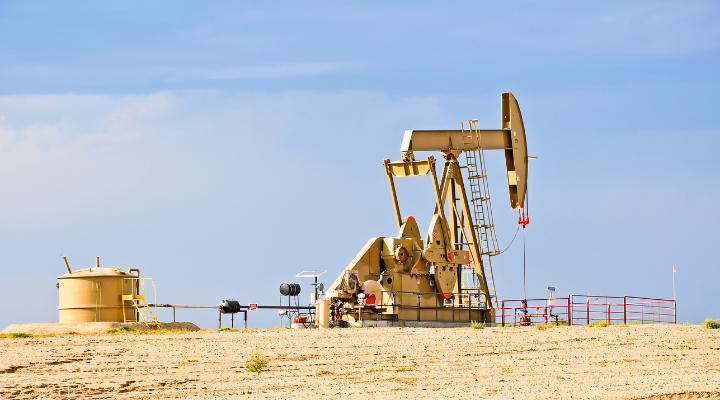
Geopolitical Risk Premium in Oil - A Challenge to the U.S. Economy?
5 minute read • October 18, 2023

5 minute read • October 18, 2023

The price of a barrel of oil should be based on the amount produced, the amount consumed, and perhaps some transportation adjustments to move the barrels to where they are needed.
However, there is a fourth component—the geopolitical risk premium. That is, the price oil traders place on the risk of production or consumption upsets from regional disagreements or conflicts.
The conflict between Israel and Hamas has increased the geopolitical risk premium today.
It adds to the oil price, and West Texas Intermediate, WTI, increased 4.36% due to the conflict from Thursday, October 5, 2023, to Tuesday, October 10, 2023, market close.
As we invest in the U.S., I thought I should address an adage of the past, “the U.S. economy does poorly when oil is high.”
The thought process is that higher oil prices impact consumers’ purchasing power and reduce business investment because of higher transportation and manufacturing costs.
The next part of this thought process is that the U.S. is a top consumer of oil and must fuel domestic consumption by purchasing foreign oil. This puts the U.S. at a disadvantage because it makes them a price taker. In times of higher oil prices, they have no choice but to pay the premium because they need the barrel.
I would offer up another view—that this was true yesterday; however, today, the domestic production and the ability to source crude from friendly neighbours like Canada help diminish the impact of higher oil prices on the U.S. economy.
As with everything investment related—it’s one part art and one part science.
In theory, you must consume less if you cannot afford the higher price. For example, the family road trip may be closer to home if gas is too expensive. This dynamic is what slows or reduces the growth potential of an economy.
As an industry, in 2021, Oil and Natural Gas made up nearly 8% of the U.S. GDP and employed almost 5.5% of the U.S. labour force either directly or indirectly.*
U.S. oil production and investment dynamics are fascinating when we look at the numbers today.
They are the world’s largest oil producer today. They are also the largest consumer.
Table 1: The top 10 oil1 producers and share of total world oil production2 in 20213

Table Notes:
1. Oil includes crude oil, all other petroleum liquids, and biofuels.
2. Production includes domestic crude oil production, all other petroleum liquids, and biofuels and refinery processing gain.
3. Source: U.S. Energy Information Administration, International Energy Statistics, Total oil (petroleum and other liquids) production, as of September 22, 2023
Table 2: The top 10 oil5 consumers and share of total world oil consumption in 20216

Table Notes:
5. Oil includes crude oil, all other petroleum liquids, and biofuels.
6. Source: U.S. Energy Information Administration, International Energy Statistics, Total oil (petroleum and other liquids) production, as of September 22, 2023
The above doesn’t just talk about crude oil. The U.S. Energy Information Administration has bucketed crude oil, all other petroleum liquids, and biofuel production into “Oil.”
Crude oil is field production; think of a pump-jack pulling barrels from the ground. Looking at global crude oil production numbers from 2022, the U.S. leads the pack.
Top Five Crude Oil Producing Countries, 1980-2022
Million barrels per day

Source: U.S. Energy Information Administration, International Energy Statistics, as of September 6, 2023
Note that U.S. production growth has been impressive from 2008 onward. Two technological innovations, fracking and horizontal drilling, granted the U.S. access to oil they never thought they could.
The Great Financial Crisis in 2008-09 resulted in cheap money due to low interest rates. Couple the cheap money with high drilling success, and you go from 5.5 million barrels per day (MBPD) of production to 12 MBPD in 15 years.
In 2023, the U.S. has hit another milestone—nearly 13 MBPD of production in July. Between the geographic constraints in the Canadian production of 4.5 MBPD and the 13 MBPD from the U.S., there is a combined 17.5 MBPD of production—and I haven’t spoken about Mexico’s ~1.9 MBPD.
All this is to say that the U.S. is very close to self-sufficient—consuming little more than it produces or can source from neighbours.
An oil industry professional will point out that one crude is not like the next. They will also point out that transportation of crude is not easy, and certain regions of the U.S. refinery network are more geared to receive barrels from ships than domestic pipe or rail connections.
All these points are valid.
Due to domestic production, the U.S. is less of a price taker today. They can moderate their purchases from foreign suppliers while still meeting their domestic consumption needs. Higher oil prices will be less of a drag on the U.S. economy and a potential source of jobs and growth. Both are good for global investors.
*Source: American Petroleum Institute. (2023). Impacts of the Oil and Natural Gas Industry on the US Economy in 2021. Prepared by PwC. Retrieved from https://www.api.org/-/media/Files/Policy/American-Energy/PwC/2023/API-PWC-Economic-Impact-Report-2023.pdf.

delivered to your inbox once a month